Welcome to the Adico world
We appreciate your subscription to our newsletter.
Stay updated on all the latest news.
The oldest metal furniture company in Portugal, and one of the oldest in Europe still in business, has built an undeniable legacy based on a unique and timeless design.
Fidelity to this Adico DNA has been one of the critical factors for the success and longevity of the company and design is an area that Adico is particularly sensitive to and has invested in, opening the door to innovative ideas from artists, designers, architects and creators.
The creation of iconic pieces in partnership with renowned national and international artists, such as Luís Laranjeira, Pedro Sottomayor, António Cayuelas, André Pinto, Emília Dias, Eduardo Rodrigues, Gio Rodrigues, among many others, is the reflection of a vision of the future, supported by a centuries-old way of being.
In 2021, and to mark the 100th anniversary, Adico inaugurated the Adico Award - Design for the next 100 years, a project of continuity and a central element in this mission to continue designing the future together with younger generations.
In collaboration with the Faculty of Engineering and the Faculty of Fine Arts of the University of Porto, with the aim of reflecting on the future of metal furniture design and fostering contact with the outside world and Academia, Adico has awarded prizes to the best projects made by students of the Master's in Industrial and Product Design.
The oldest metal furniture company in Portugal, and one of the oldest in Europe still in business, has built an undeniable legacy based on a unique and timeless design.
Fidelity to this Adico DNA has been one of the critical factors for the success and longevity of the company and design is an area that Adico is particularly sensitive to and has invested in, opening the door to innovative ideas from artists, designers, architects and creators.
The creation of iconic pieces in partnership with renowned national and international artists, such as Luís Laranjeira, Pedro Sottomayor, António Cayuelas, André Pinto, Emília Dias, Eduardo Rodrigues, Gio Rodrigues, among many others, is the reflection of a vision of the future, supported by a centuries-old way of being.
In 2021, and to mark the 100th anniversary, Adico inaugurated the Adico Award - Design for the next 100 years, a project of continuity and a central element in this mission to continue designing the future together with younger generations.
In collaboration with the Faculty of Engineering and the Faculty of Fine Arts of the University of Porto, with the aim of reflecting on the future of metal furniture design and fostering contact with the outside world and Academia, Adico has awarded prizes to the best projects made by students of the Master's in Industrial and Product Design.
With a career of more than 20 years, Gio Rodrigues' sense of style is reflected in his various collections, which are increasingly transversal and focused on lifestyle. The quality, sobriety, sensuality, and comfort of his collections make the designer a reference in Portuguese fashion.
Gio Chair
Year: 2023
With classic and timeless lines, but with a touch of innovation that gives it a sophisticated and elegant design, highlighted by the choice of white and gold colors, the Cadeira Gio, inspired by the Portuguese Chair, brings the icon of terraces to interior spaces.
The structure is made entirely of steel, Adico's preferred raw material, with a golden epoxy paint finish. The back and the seat are upholstered in an elegant white ecoskin.
Resulting from its minimalist design, the Cadeira Gio stands out for its refinement and versatility, adapting to various environments, from living rooms and dining rooms to offices and commercial spaces.

Architect, graduate from FAUP in 1988, works in the fields of housing, equipment, urban planning and furniture design. Together with the architect Adelina Costa, he is part of the company LA Design, based in Avanca, since 2004.
He started his collaboration with Adico in 1990, and since then he has been in charge of the architectural projects for the company's facilities. In the field of product design, he was the author of restaurant furniture between 1994 and 2008, and hospital furniture between 2008 and 2018. He was also the author of several exhibition stands for fairs in which Adico participated.
The "Arpa" chair has a vaguely zoomorphic design and is characterized by a simple structure with a reference to the geometry of the "Portuguese Chair", but spatially more contained. Each of the three versions is customized in the shapes of the seat and, especially, the backrest.
Arpa 1
Year: 2003
Moderate and balanced, it diffuses a soft climate in the surrounding environment without losing the visibility of its personality. Its pastel colors facilitate interaction with different elements of the space, maintaining the autonomy of structural communication.

Arpa 2
Year: 2003
With wavy lines, it is integrated into urban environments in dialogue with stronger natural materials, such as wood and stone. The combination of colors was studied in order for them to coexist together.

Arpa 3
Year: 2003
With more sober lines, this chair contributes to the dynamics of the spaces, without losing the logic of the context.
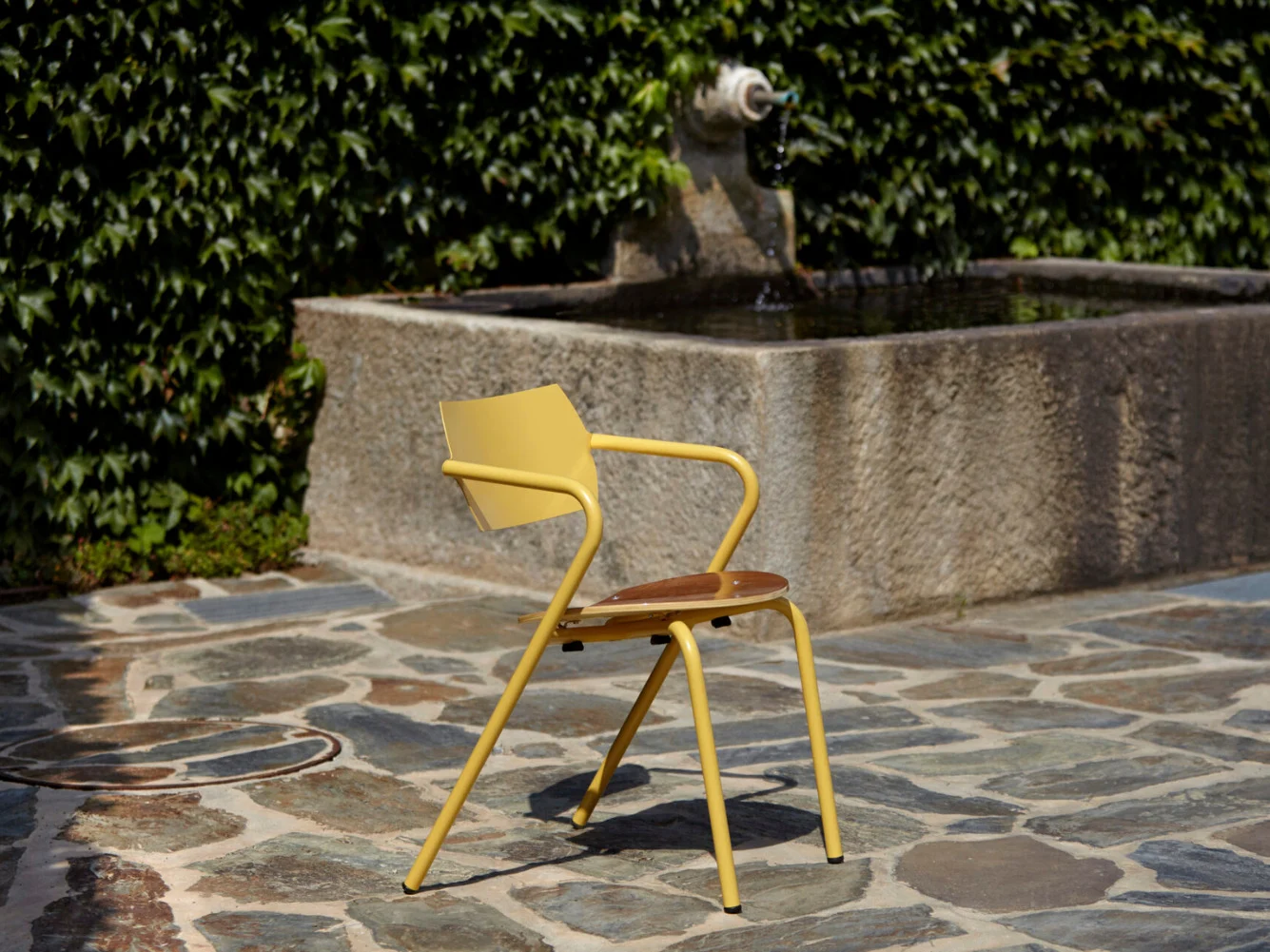
Z
Year: 2004
From the organic, simple, free-standing design with its fabric-inspired backrest, the Z chair is geared towards modern environments, where the colors combined with its linear Z-shaped structure project a touch of sophistication.

Realizador
Year: 2004
This concept emerges as a metal interpretation of the traditional director's chair — cadeira de realizador in Portuguese — made of wood and fabric. The lightness of the metal structure recreates the solid wood; the combination of the molded seat in marine plywood with the shape of the metal backrest represents the fabric. The comfort and simplicity of the design compose sober and original spaces.
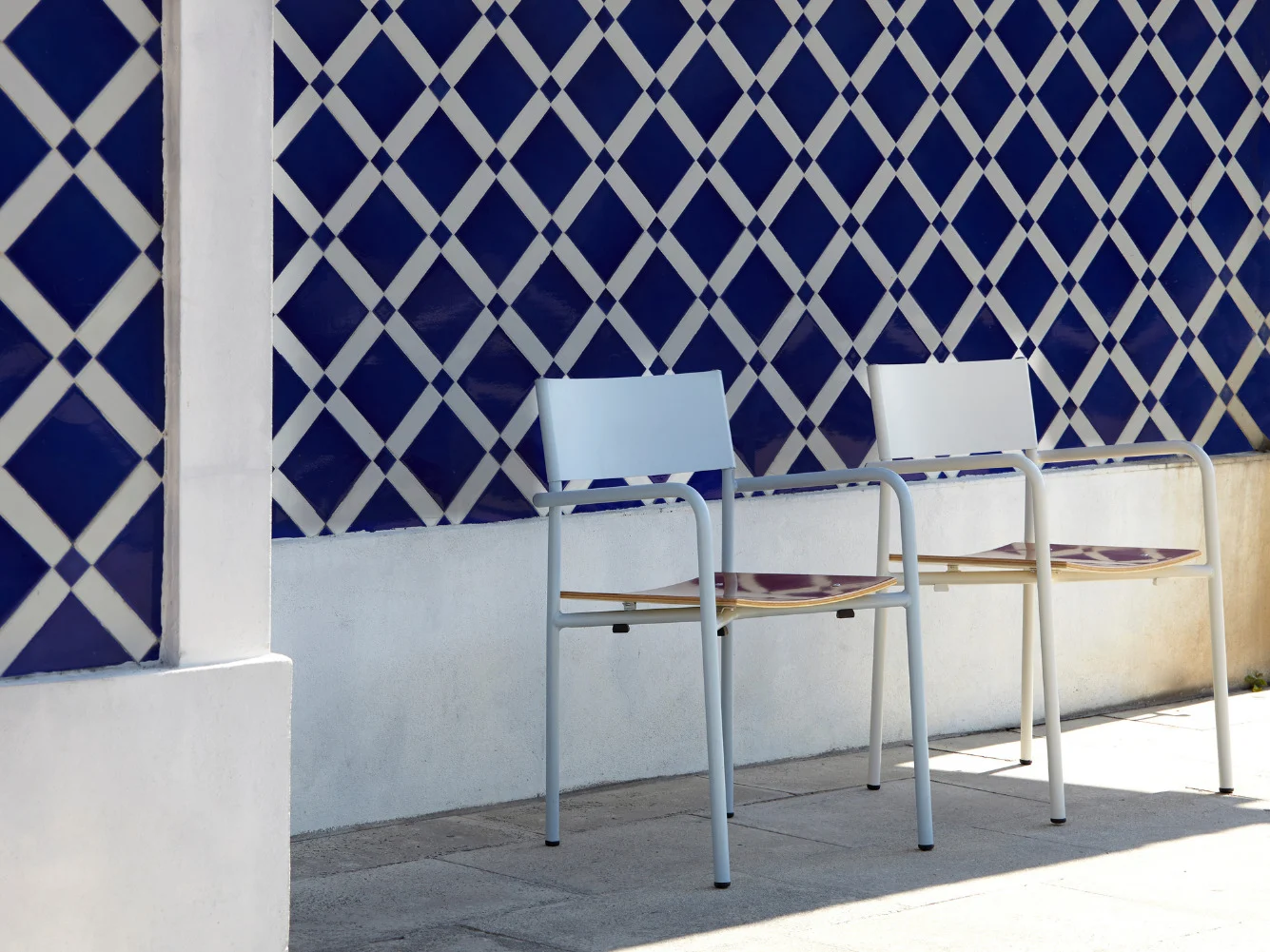
In 2009, Pedro Sottomayor founded his design office in Lisbon. Since then, his work has been guided by two main strands: the development of new products and creative direction for brands and companies.
Born in Porto, Pedro went to Italy to study industrial design and learn directly from the Italian masters. His experience in Italy was crucial in developing the principles that guide his approach to design: beauty, culture, and design consciousness, all channeled into efficient industrial production.
In 2016, Pedro Sottomayor won a competition organized by the Lisbon City Council to design the new layout, regulations and equipment for the outdoor areas of the cafes in the city center. He designed some of the new furniture , produced by Adico , and was responsible for coordinating the entire process.
Maria
Year: 2017
The Maria chair by Pedro Sottomayor was inspired by the Portuguese chair 5008. A stackable garden chair with a new vision, in aluminum, with a continuous and light top, reduced structural arms and Epoxy painting.
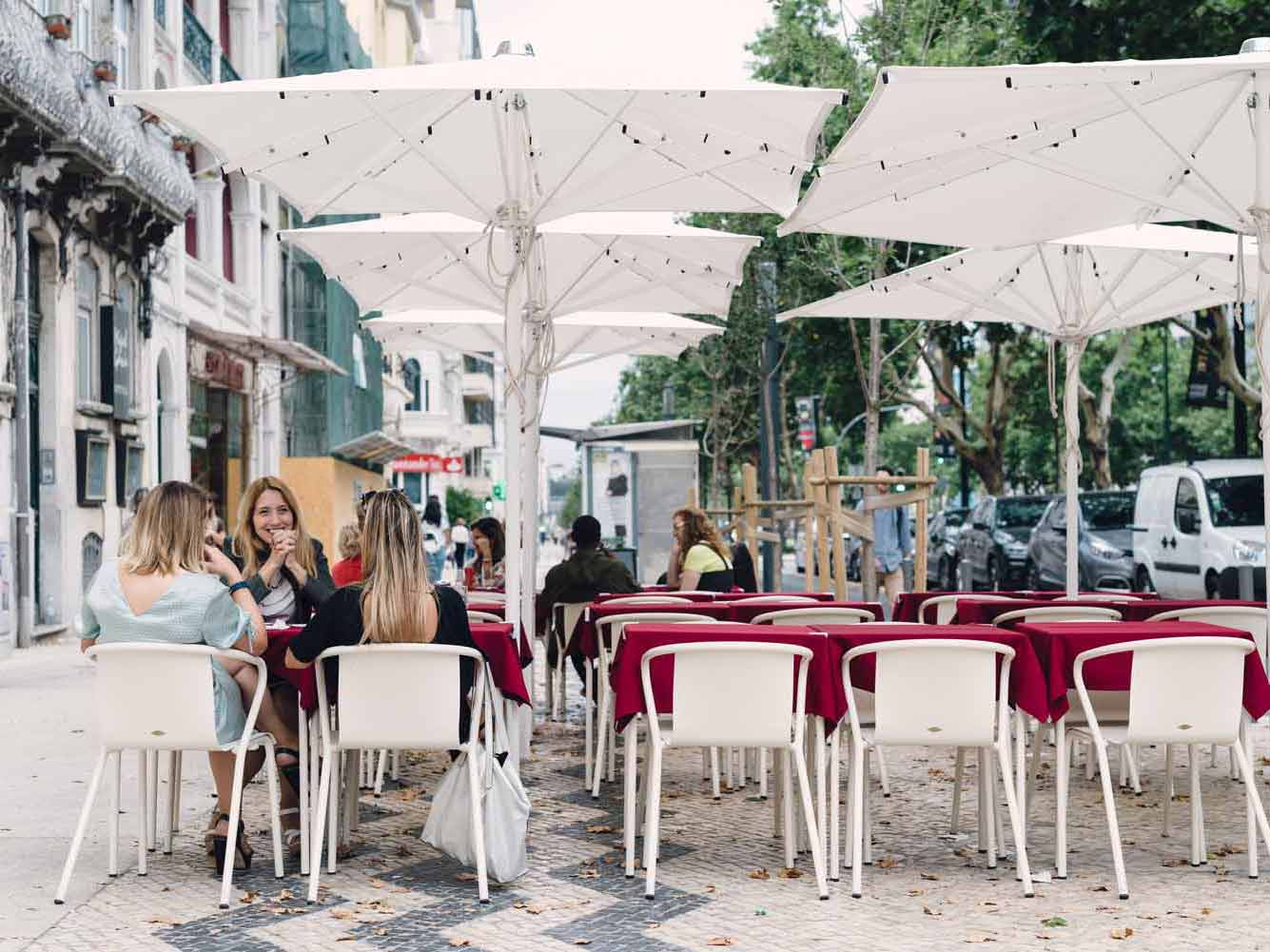
Manel
Year: 2017
Pedro Sottomayor's Manel chair follows the construction line of the Maria chair, with slight differences, such as the larger arms, which bring it even closer to the Portuguese chair, but with the continuous and light top, characteristic of both of Sottomayor's creations.

Antonio Cayuelas Porras, an Andalusian architect, grew up in Cordoba, worked and lived in Seville, and since 2015 has been living in Grenada, where he is a professor at the Higher Technical School of Architecture of the University of Granada.
In parallel with his work as an architect, he has extensive experience in design and interior design, and sees work as the best learning workshop. As a designer, he wants to contribute to improving people's habitat and solving situations not addressed by industry.
He is currently developing a series of new furniture designs and products, such as the García Lorca Series of bookcases for Metalundia.
Andaluza
Year: 2016
The Andaluza chair emerges from the confluence of the circle as a reflection of a more Mediterranean concept, reminiscent of the trail left by the gyre of flamenco dancing.
This idea, translated in the operation of the curvature of the tube and the steel plate, seeks an involving and comfortable character for an urban chair, especially suitable for outdoor spaces.
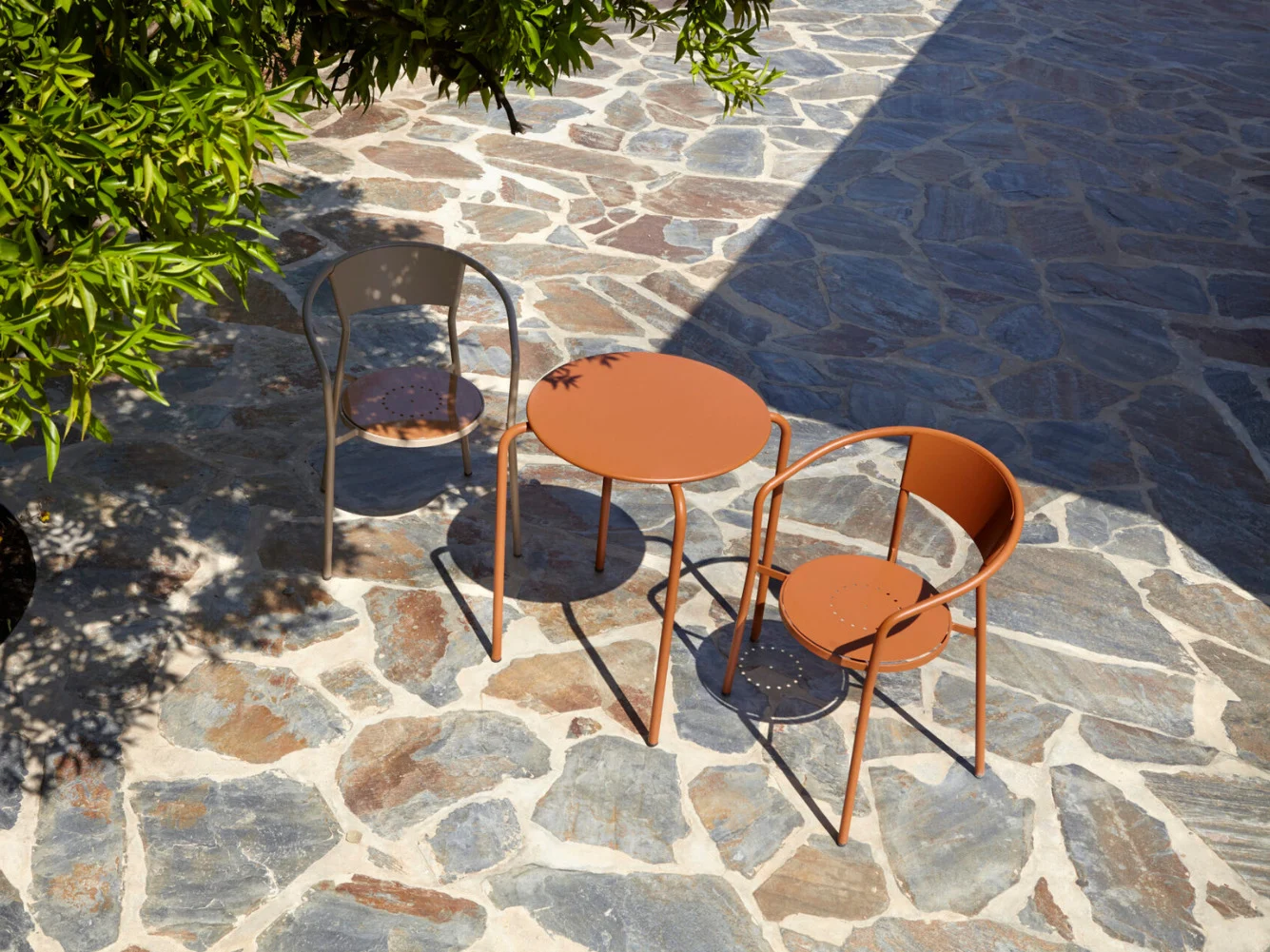
André Pinto, born in Porto (Portugal) in 1985, studied Product Design at Instituto Politécnico de Viana do Castelo, where he completed his higher education. He collaborated in Portuguese industrial design studios, but acquired a taste for the immediate connection between design and manufacturing, joining the Adico team in 2009, where he is now the head of the Technical Department and Head Designer.
He develops projects strategically, from the creative concept to its final form. "I see design as a whole, where the most diverse fields should always complement each other and where each product should be able to tell stories and provide new experiences" — André Pinto.
Through his participation in the "Take a Seat" contest, promoted by Adico, he established his first contact with the company. He was immediately fascinated by its history and the constant search for new ways to sit. After concluding his professional internship, he joined the Adico team, where, until today, he feels the responsibility to add new and beautiful chapters to the already long history.
786-B
Year: 2017
The 786-B high stool by André Pinto raises the bar of an Adico classic - the 786-A chair - with a redefinition of proportions and visual balance. After a closer look, it manifests itself far beyond its indoor and outdoor applicability. The harmony of its forms, timeless and fluid, prepares it to coexist in all kinds of environments.
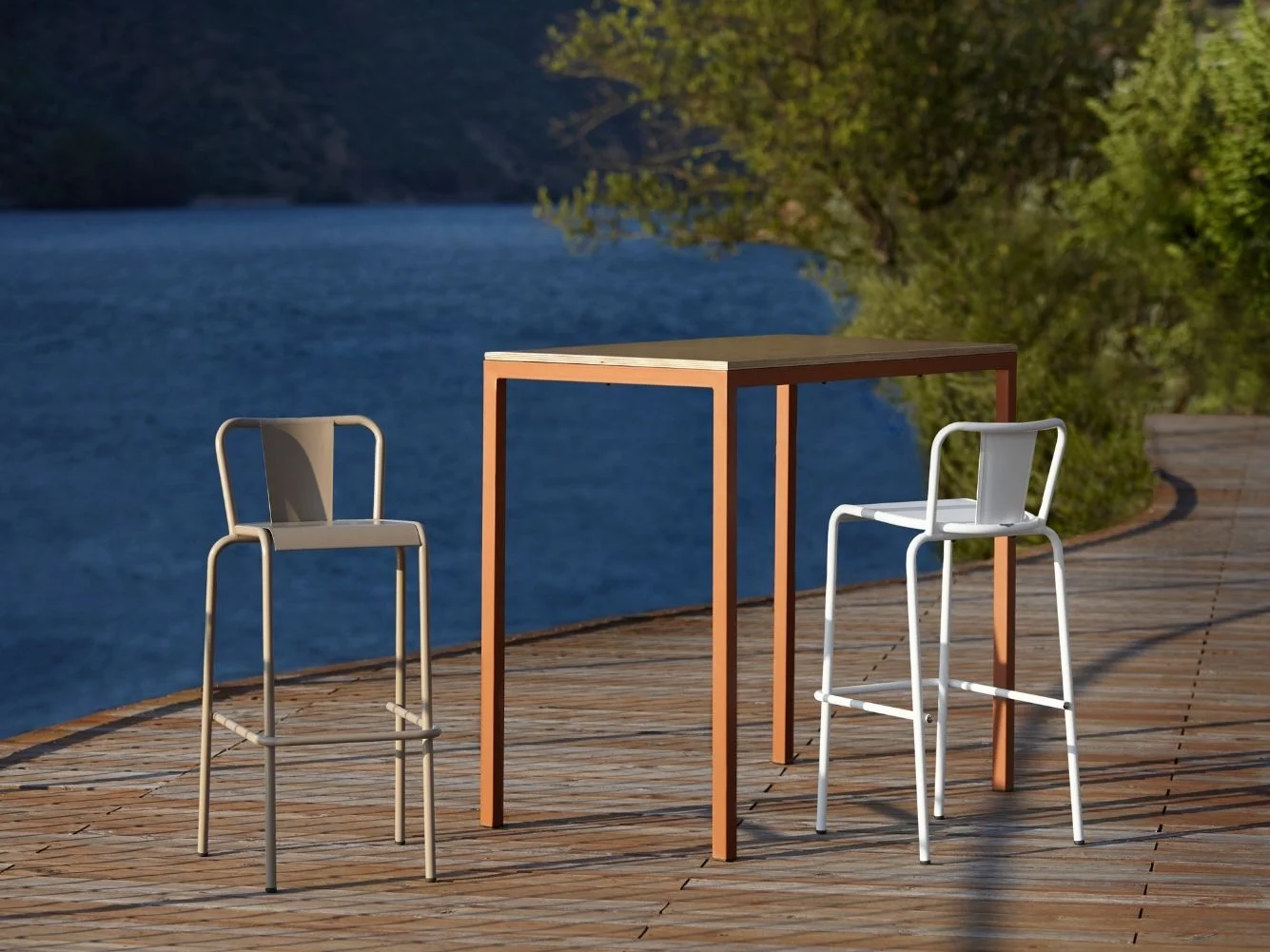
5008-B
Year: 2019
Expanding the family of the Portuguese Chair - 5008 - and responding to the new lifestyles, 5008-B makes it possible to interact in the same space in a completely integrated way.
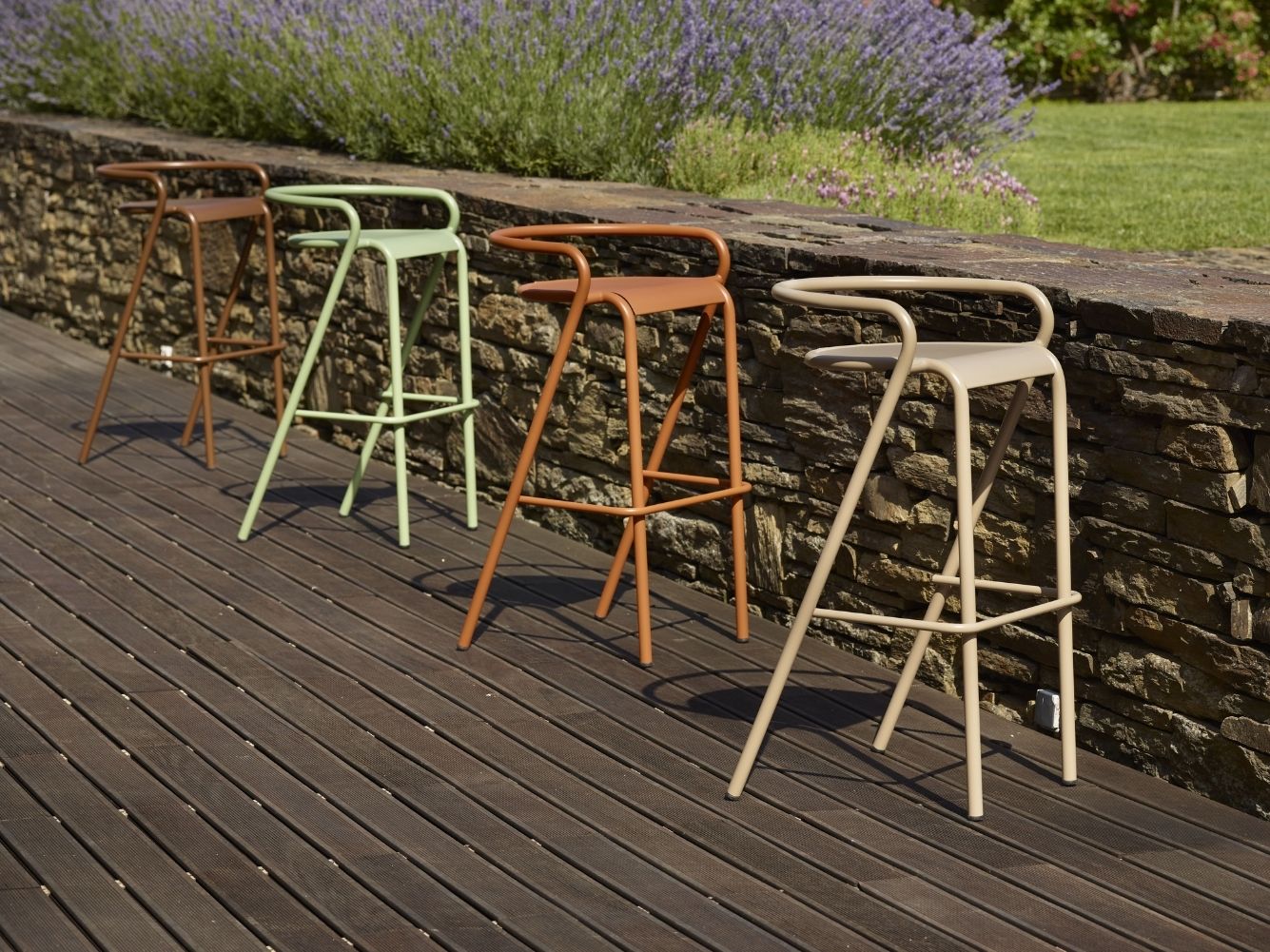
C111
Year: 2016
With a minimalist design, the C111 is a solution for different spots, where relaxation is a priority.
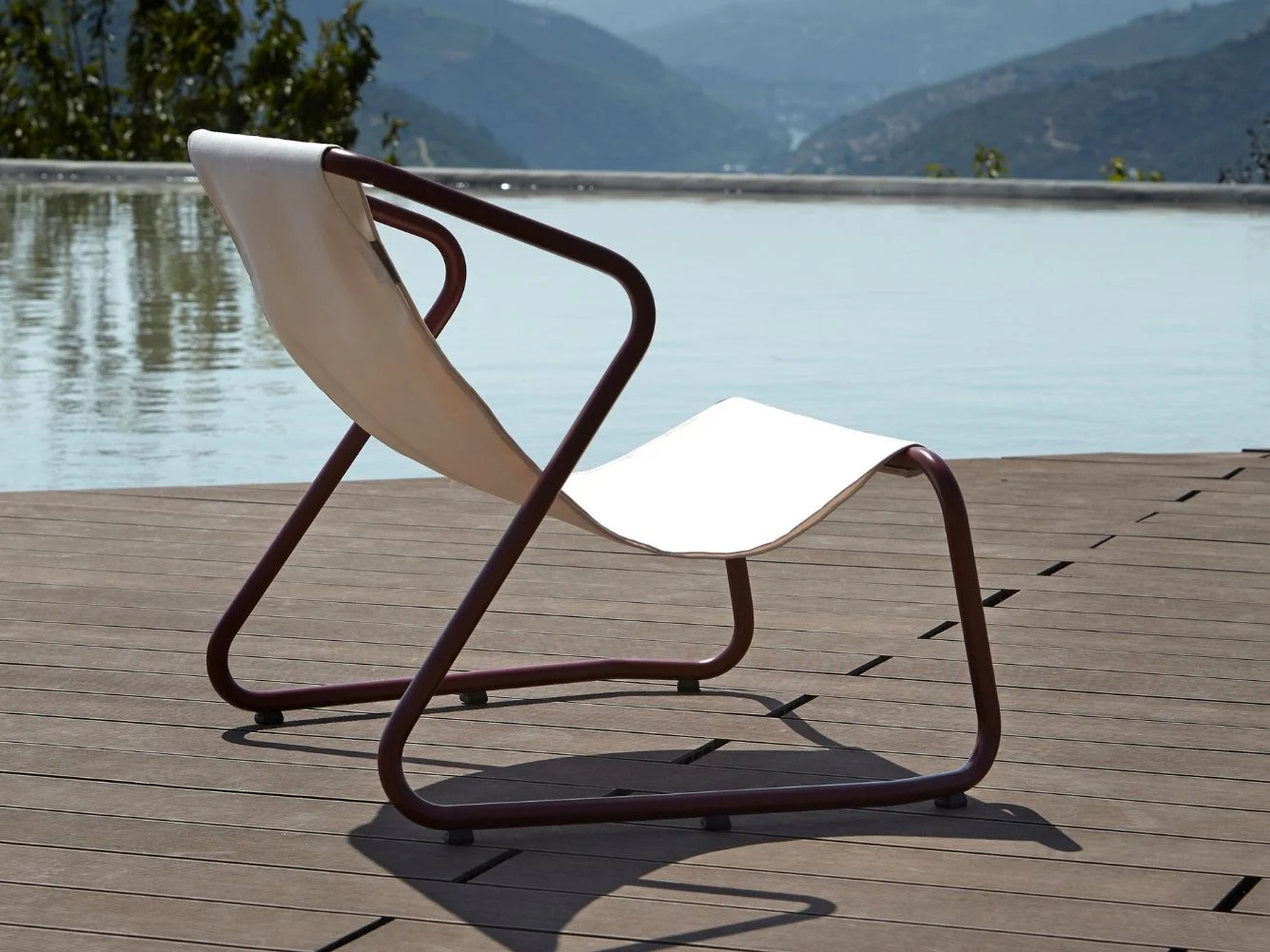
Baze
Year: 2019
Optimization and support are the key attributes of the Baze solution.
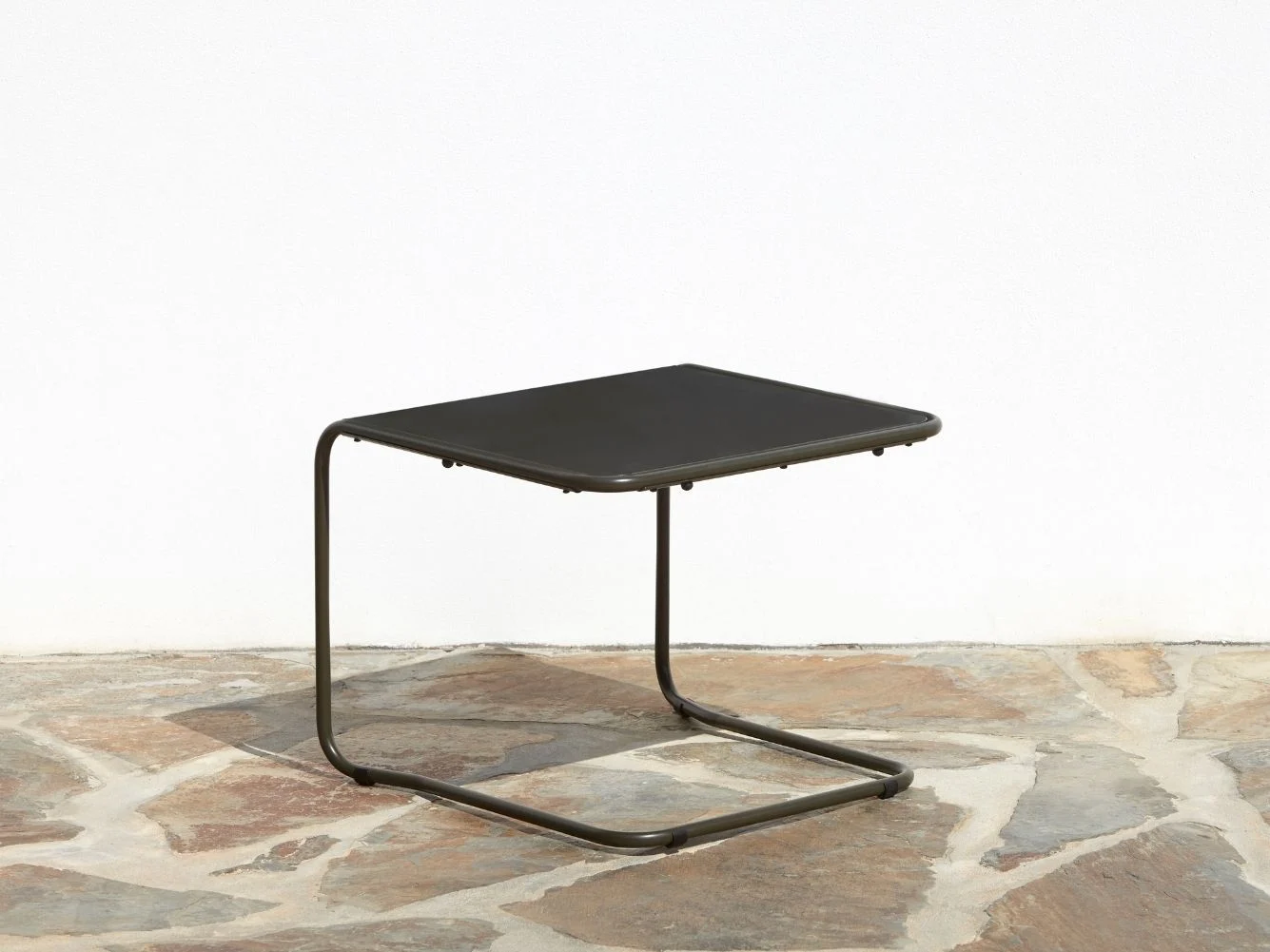
Emília Dias, born in Oliveira de Azeméis (Portugal) in 1991, studied Industrial Design at the University of Aveiro. It was at the University that she learned about Adico, which immediately captivated her.
As a professional, she had the opportunity to be part of the company's team as a resident designer. Her taste for Bauhaus, combined with Adico's history, transformed the metallic furniture into her inspiration, where the project assumes a unity, from the concept to the industrial production.
During her professional internship, as this was her first contact with Adico, she quickly established a connection and empathy with the product, namely with its tubular language, in which the tube is the main protagonist.
591
Year: 2017
The 591 square table reimagines a classic shape and transforms it with the introduction of a support structure that translates into movement and elegance.

Eduardo Rodrigues, graduated in Product Design from Instituto Politécnico de Viana do Castelo, started and spent half of his professional life at Adico, a company he refers to as "a second school, where he was allowed to evolve as a professional and as a person".
The connection to Adico came from a professional internship at LA Design, between 2005 and 2006, where he carried out several works for Adico. He was later responsible for the research and development department at Adico, from 2007 to 2014, in the hotel and contract area.
Capa and Capa Lounge
Year: 2008 e 2013
With consistent lines, in which metal and wood harmonize, the shape of the Capa models gives them ergonomics and a "new classic" character. Their multifaceted personality allows them, through color, to be integrated into any environment, from the most classic to the most irreverent.
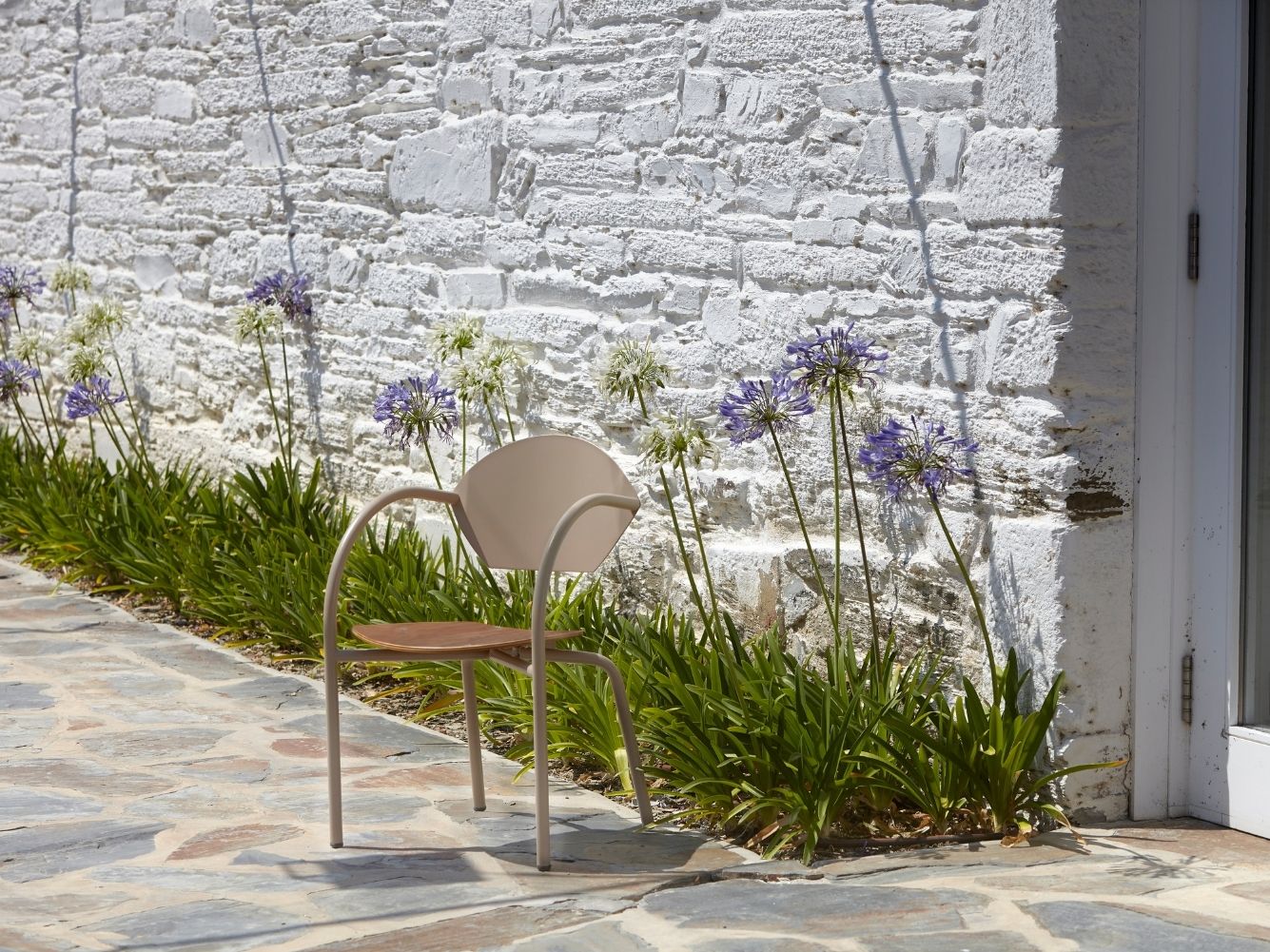
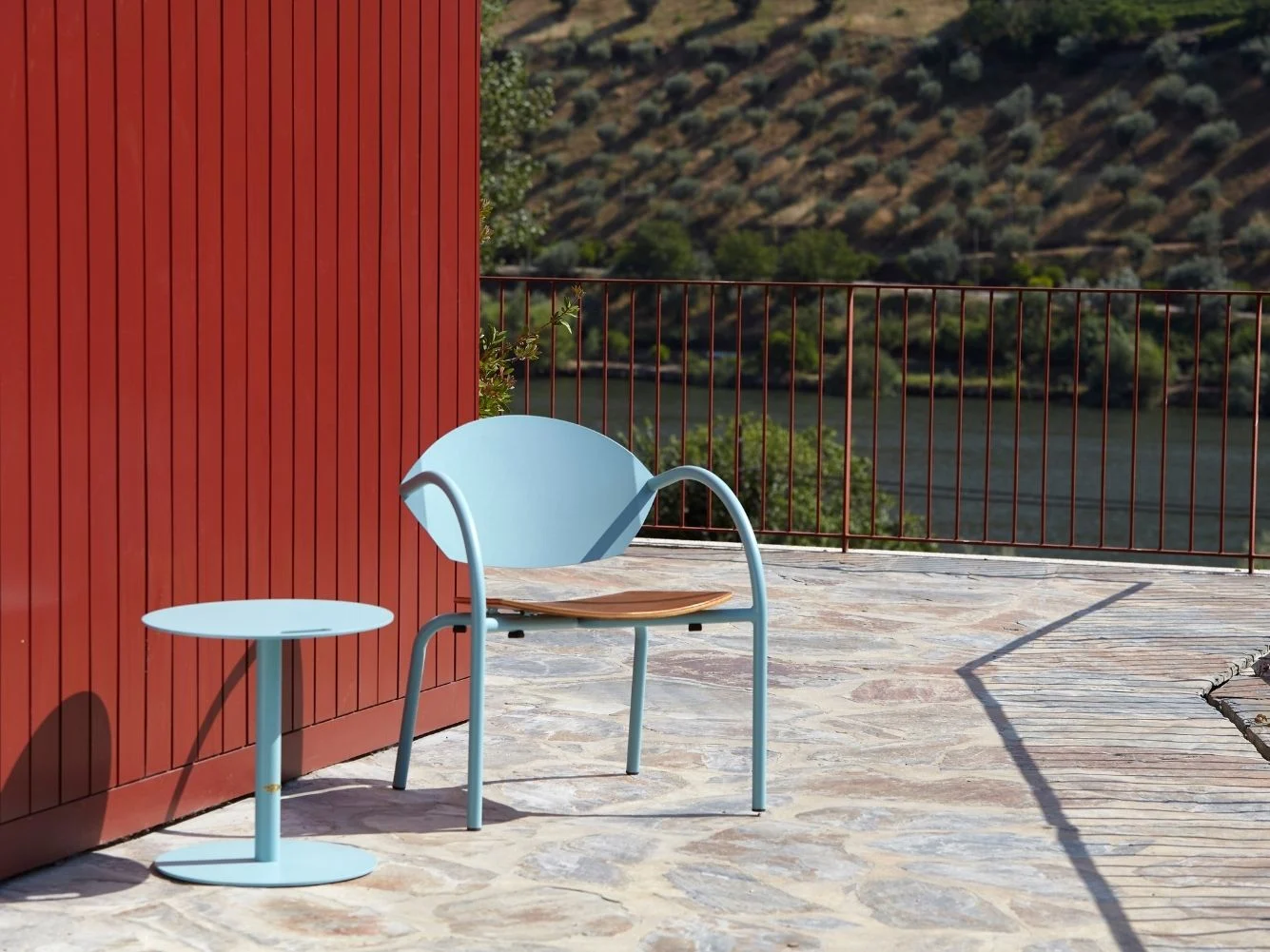
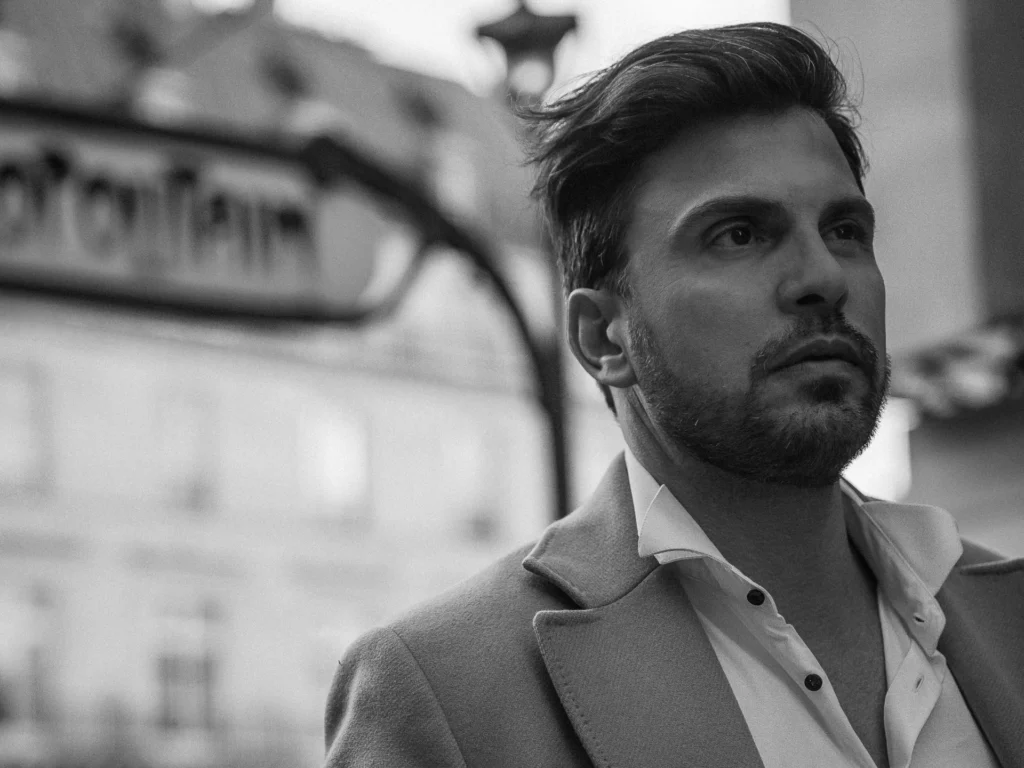
With a career of more than 20 years, Gio Rodrigues' sense of style is reflected in his various collections, which are increasingly transversal and focused on lifestyle. The quality, sobriety, sensuality, and comfort of his collections make the designer a reference in Portuguese fashion.
Gio Chair
Year: 2023
With classic and timeless lines, but with a touch of innovation that gives it a sophisticated and elegant design, highlighted by the choice of white and gold colors, the Cadeira Gio, inspired by the Portuguese Chair, brings the icon of terraces to interior spaces.
The structure is made entirely of steel, Adico's preferred raw material, with a golden epoxy paint finish. The back and the seat are upholstered in an elegant white ecoskin.
Resulting from its minimalist design, the Cadeira Gio stands out for its refinement and versatility, adapting to various environments, from living rooms and dining rooms to offices and commercial spaces.
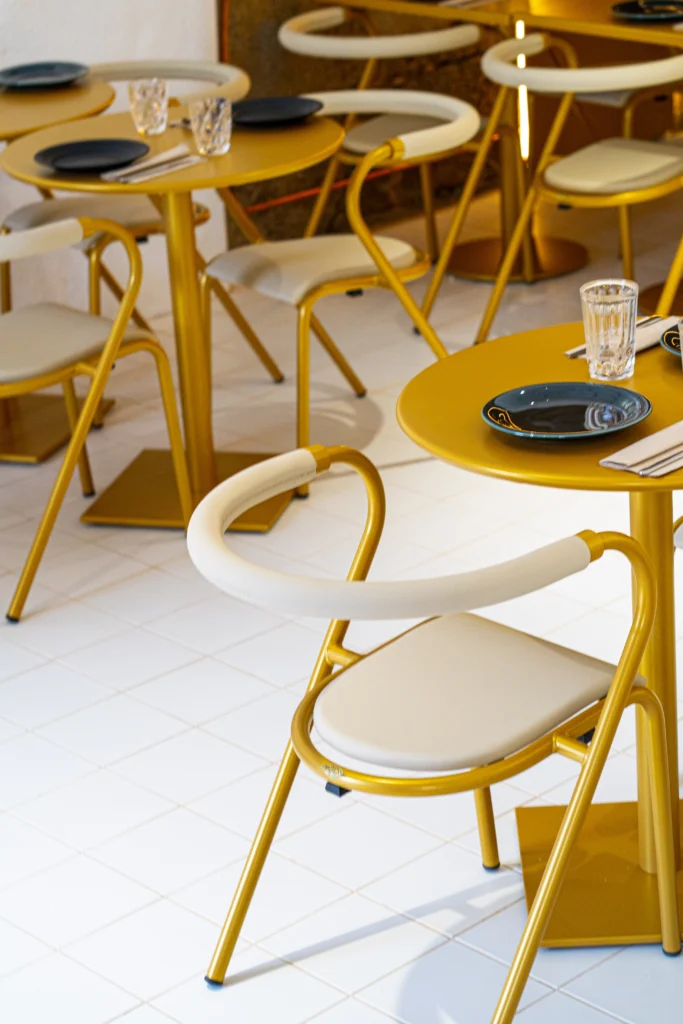
Architect, graduate from FAUP in 1988, works in the fields of housing, equipment, urban planning and furniture design. Together with the architect Adelina Costa, he is part of the company LA Design, based in Avanca, since 2004.
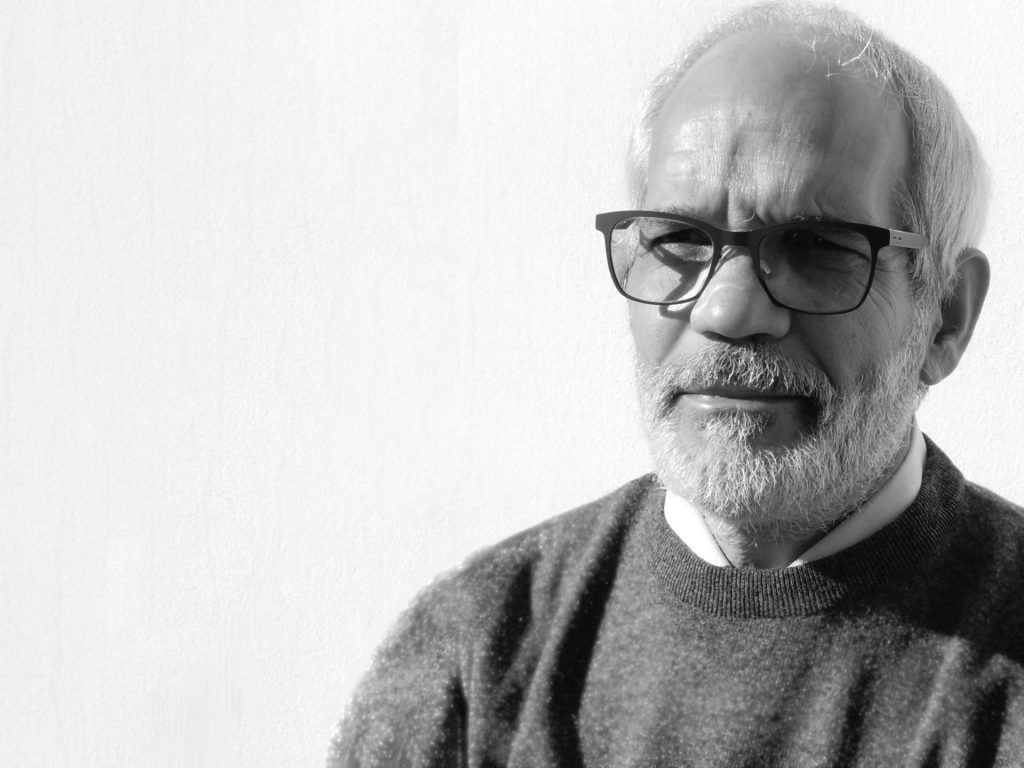
He started his collaboration with Adico in 1990, and since then he has been in charge of the architectural projects for the company's facilities. In the field of product design, he was the author of restaurant furniture between 1994 and 2008, and hospital furniture between 2008 and 2018. He was also the author of several exhibition stands for fairs in which Adico participated.
The "Arpa" chair has a vaguely zoomorphic design and is characterized by a simple structure with a reference to the geometry of the "Portuguese Chair", but spatially more contained. Each of the three versions is customized in the shapes of the seat and, especially, the backrest.
Arpa 1
Year: 2003
Moderate and balanced, it diffuses a soft climate in the surrounding environment without losing the visibility of its personality. Its pastel colors facilitate interaction with different elements of the space, maintaining the autonomy of structural communication.

Arpa 2
Year: 2003
With wavy lines, it is integrated into urban environments in dialogue with stronger natural materials, such as wood and stone. The combination of colors was studied in order for them to coexist together.

Arpa 3
Year: 2003
With more sober lines, this chair contributes to the dynamics of the spaces, without losing the logic of the context.

Z
Year: 2004
From the organic, simple, free-standing design with its fabric-inspired backrest, the Z chair is geared towards modern environments, where the colors combined with its linear Z-shaped structure project a touch of sophistication.
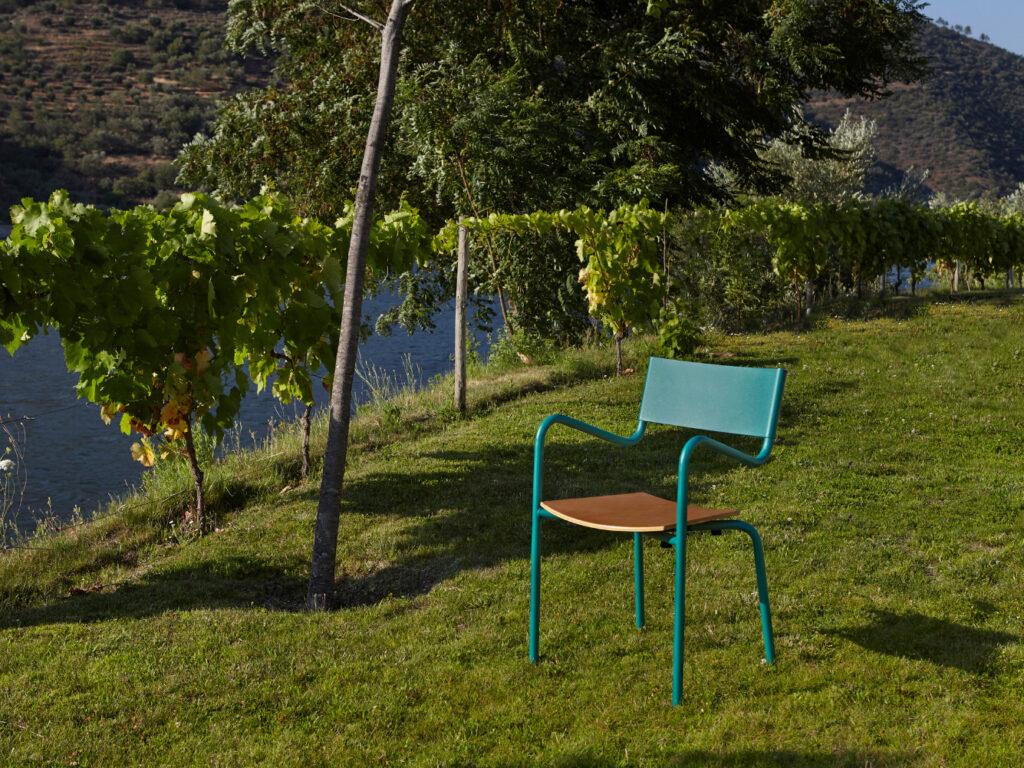
Realizador
Year: 2004
This concept emerges as a metal interpretation of the traditional director's chair — cadeira de realizador in Portuguese — made of wood and fabric. The lightness of the metal structure recreates the solid wood; the combination of the molded seat in marine plywood with the shape of the metal backrest represents the fabric. The comfort and simplicity of the design compose sober and original spaces.

In 2009, Pedro Sottomayor founded his design office in Lisbon. Since then, his work has been guided by two main strands: the development of new products and creative direction for brands and companies.
Born in Porto, Pedro went to Italy to study industrial design and learn directly from the Italian masters. His experience in Italy was crucial in developing the principles that guide his approach to design: beauty, culture, and design consciousness, all channeled into efficient industrial production.

In 2016, Pedro Sottomayor won a competition organized by the Lisbon City Council to design the new layout, regulations and equipment for the outdoor areas of the cafes in the city center. He designed some of the new furniture , produced by Adico , and was responsible for coordinating the entire process.
Maria
Year: 2017
The Maria chair by Pedro Sottomayor was inspired by the Portuguese chair 5008. A stackable garden chair with a new vision, in aluminum, with a continuous and light top, reduced structural arms and Epoxy painting.
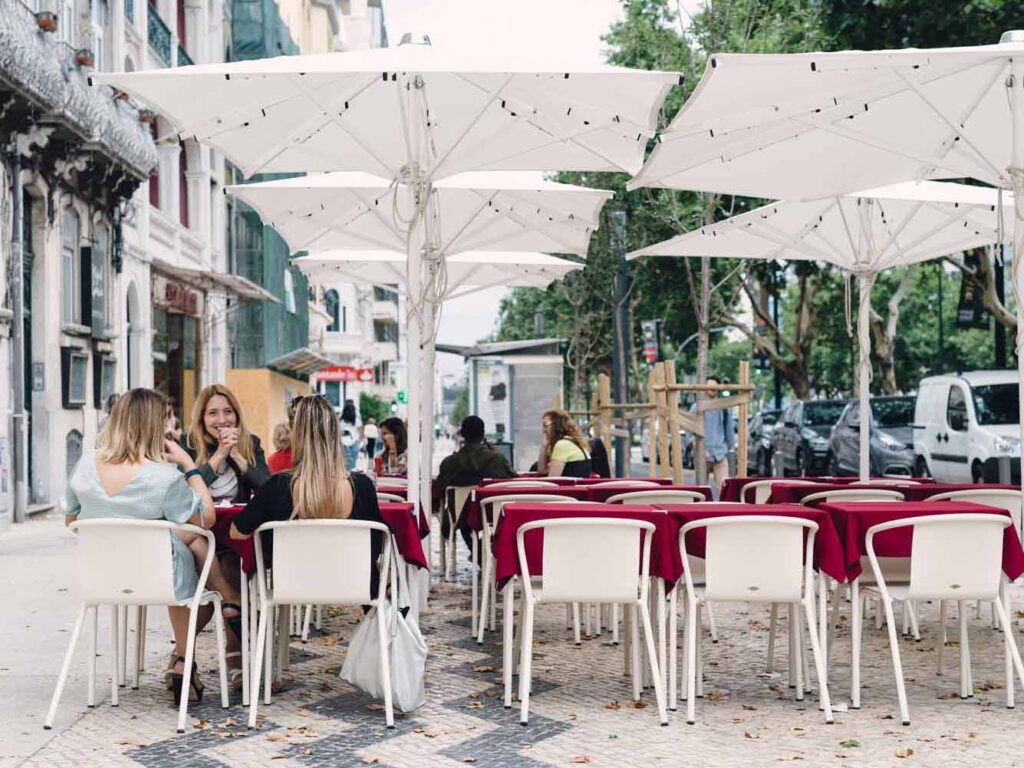
Manel
Year: 2017
Pedro Sottomayor's Manel chair follows the construction line of the Maria chair, with slight differences, such as the larger arms, which bring it even closer to the Portuguese chair, but with the continuous and light top, characteristic of both of Sottomayor's creations.
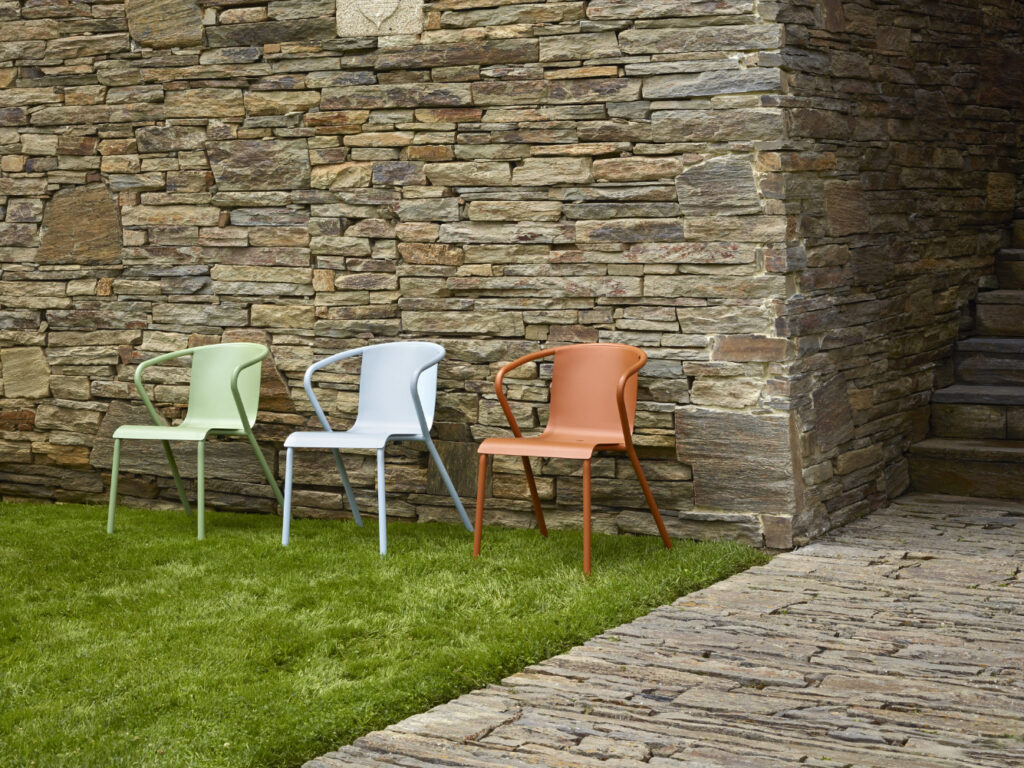
Antonio Cayuelas Porras, an Andalusian architect, grew up in Cordoba, worked and lived in Seville, and since 2015 has been living in Grenada, where he is a professor at the Higher Technical School of Architecture of the University of Granada.
In parallel with his work as an architect, he has extensive experience in design and interior design, and sees work as the best learning workshop. As a designer, he wants to contribute to improving people's habitat and solving situations not addressed by industry.
He is currently developing a series of new furniture designs and products, such as the García Lorca Series of bookcases for Metalundia.
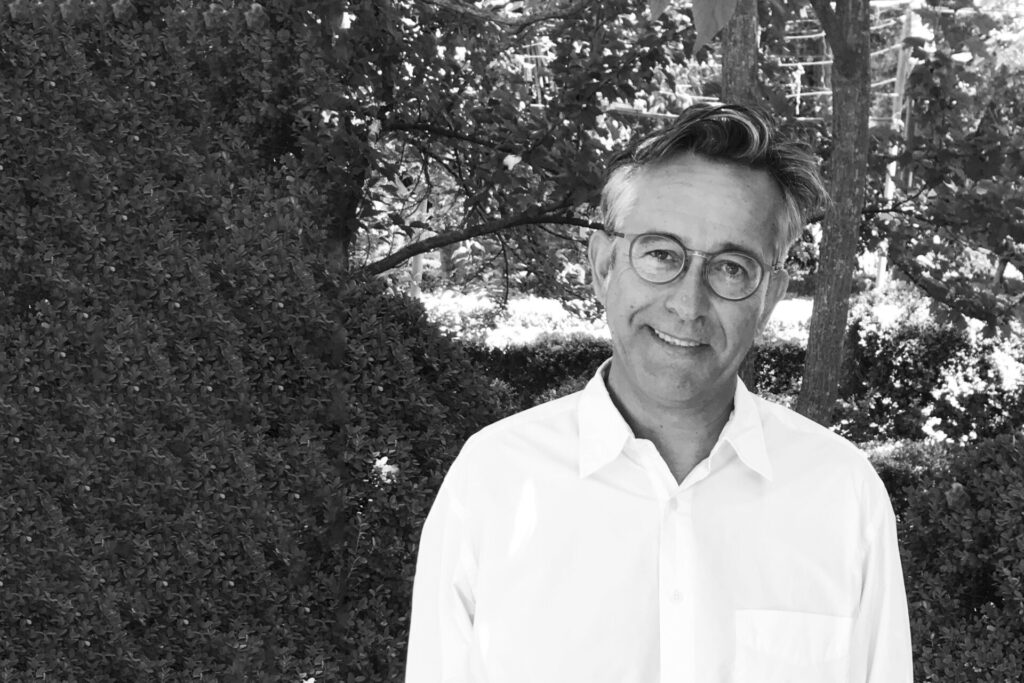
Andaluza
Year: 2016
The Andaluza chair emerges from the confluence of the circle as a reflection of a more Mediterranean concept, reminiscent of the trail left by the gyre of flamenco dancing.
This idea, translated in the operation of the curvature of the tube and the steel plate, seeks an involving and comfortable character for an urban chair, especially suitable for outdoor spaces.

André Pinto, born in Porto (Portugal) in 1985, studied Product Design at Instituto Politécnico de Viana do Castelo, where he completed his higher education. He collaborated in Portuguese industrial design studios, but acquired a taste for the immediate connection between design and manufacturing, joining the Adico team in 2009, where he is now the head of the Technical Department and Head Designer.
He develops projects strategically, from the creative concept to its final form. "I see design as a whole, where the most diverse fields should always complement each other and where each product should be able to tell stories and provide new experiences" — André Pinto.
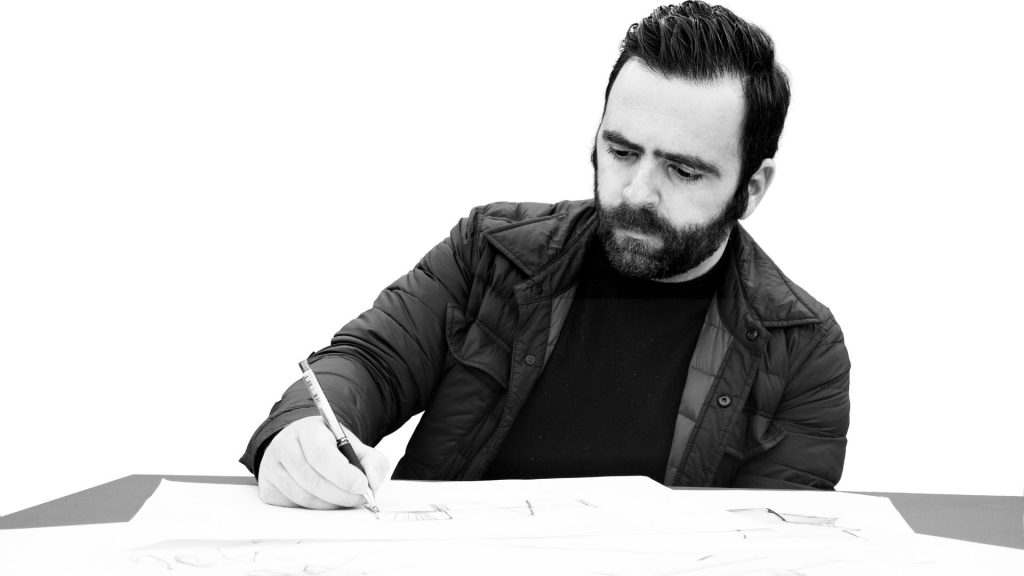
Through his participation in the "Take a Seat" contest, promoted by Adico, he established his first contact with the company. He was immediately fascinated by its history and the constant search for new ways to sit. After concluding his professional internship, he joined the Adico team, where, until today, he feels the responsibility to add new and beautiful chapters to the already long history.
786-B
Year: 2017
The 786-B high stool by André Pinto raises the bar of an Adico classic - the 786-A chair - with a redefinition of proportions and visual balance. After a closer look, it manifests itself far beyond its indoor and outdoor applicability. The harmony of its forms, timeless and fluid, prepares it to coexist in all kinds of environments.

5008-B
Year: 2019
Expanding the family of the Portuguese Chair - 5008 - and responding to the new lifestyles, 5008-B makes it possible to interact in the same space in a completely integrated way.

C111
Year: 2016
With a minimalist design, the C111 is a solution for different spots, where relaxation is a priority.
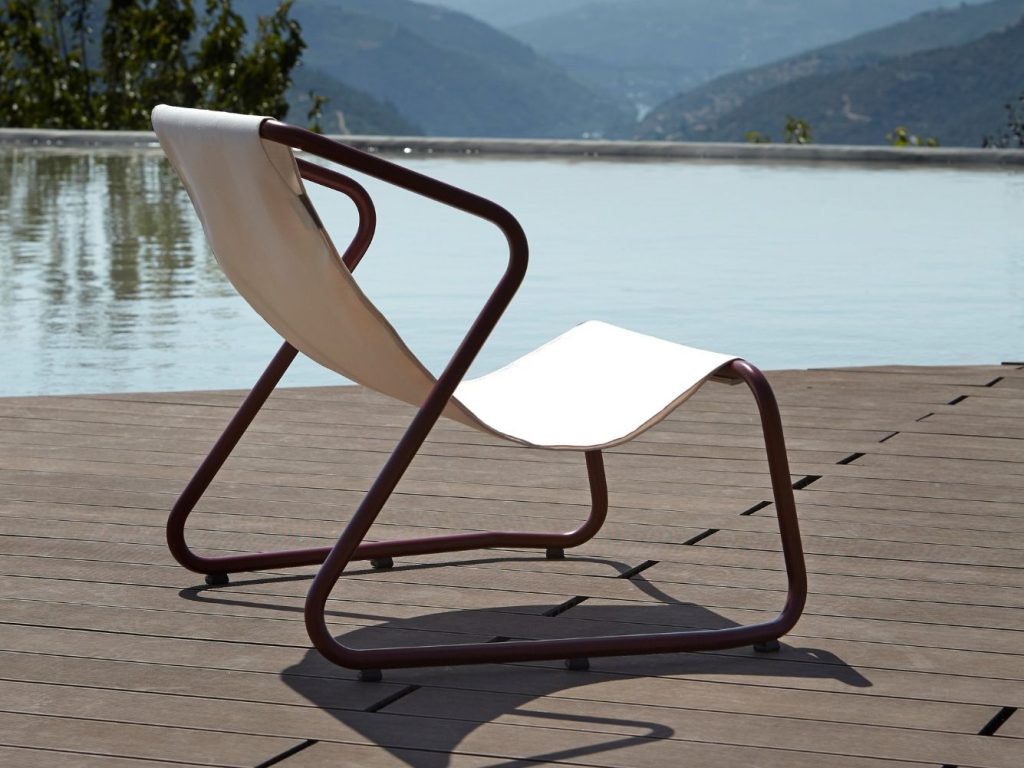
Baze
Year: 2019
Optimization and support are the key attributes of the Baze solution.
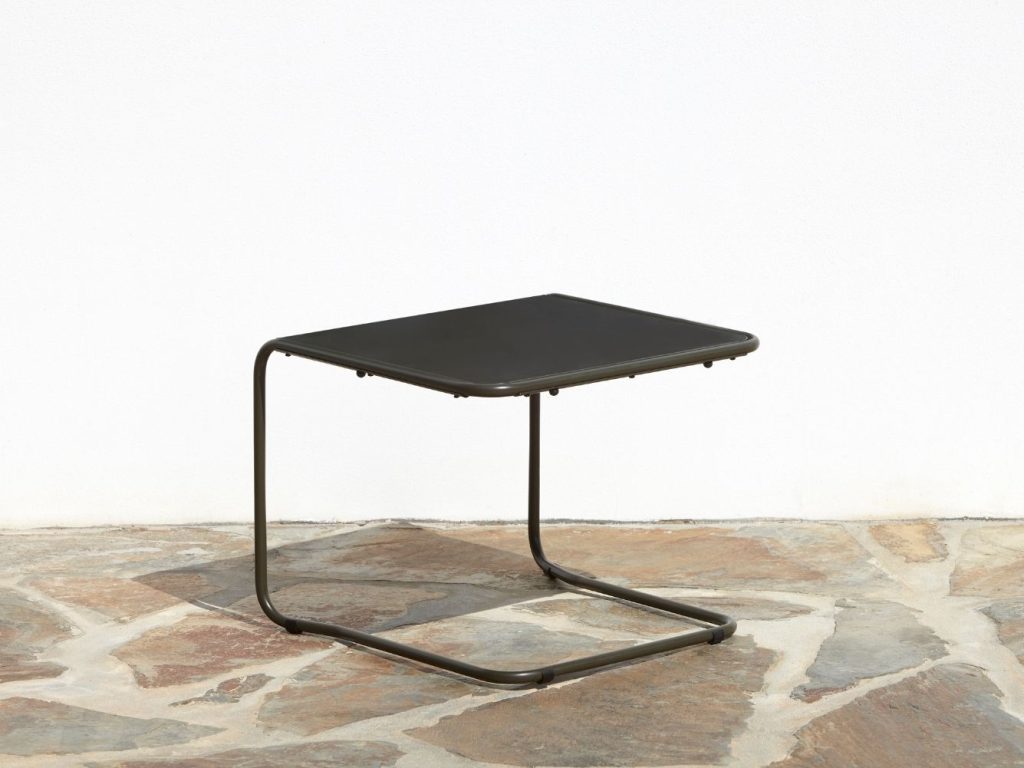
Emília Dias, born in Oliveira de Azeméis (Portugal) in 1991, studied Industrial Design at the University of Aveiro. It was at the University that she learned about Adico, which immediately captivated her.
As a professional, she had the opportunity to be part of the company's team as a resident designer. Her taste for Bauhaus, combined with Adico's history, transformed the metallic furniture into her inspiration, where the project assumes a unity, from the concept to the industrial production.
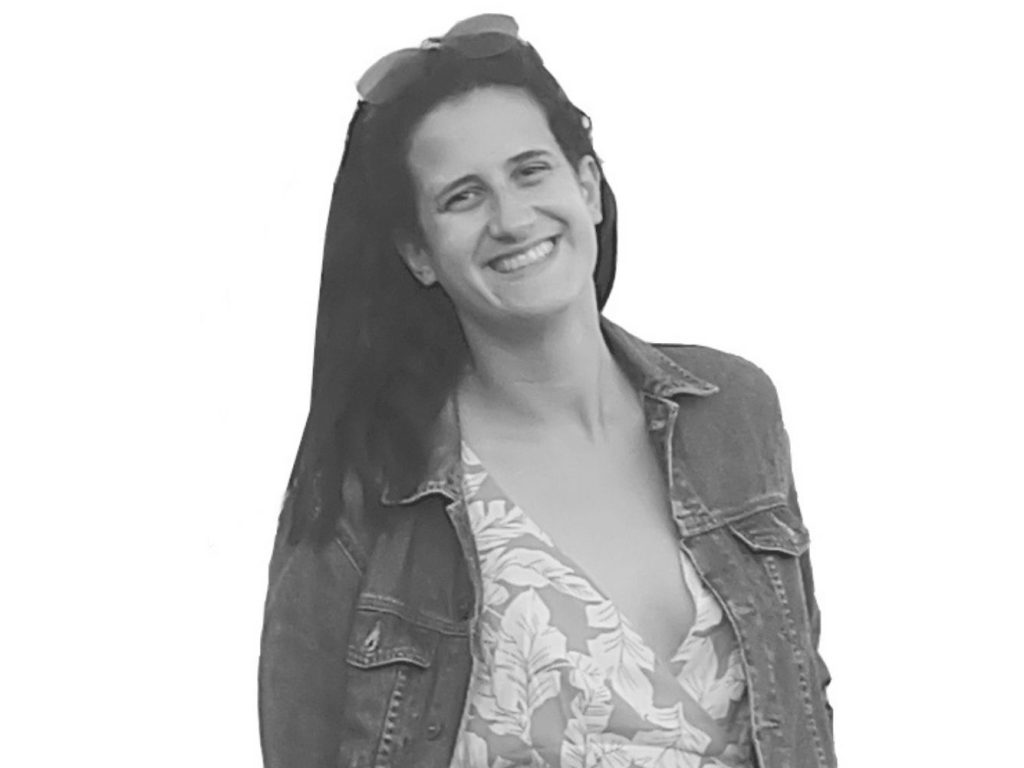
During her professional internship, as this was her first contact with Adico, she quickly established a connection and empathy with the product, namely with its tubular language, in which the tube is the main protagonist.
591
Year: 2017
The 591 square table reimagines a classic shape and transforms it with the introduction of a support structure that translates into movement and elegance.

Eduardo Rodrigues, graduated in Product Design from Instituto Politécnico de Viana do Castelo, started and spent half of his professional life at Adico, a company he refers to as "a second school, where he was allowed to evolve as a professional and as a person".

The connection to Adico came from a professional internship at LA Design, between 2005 and 2006, where he carried out several works for Adico. He was later responsible for the research and development department at Adico, from 2007 to 2014, in the hotel and contract area.
Capa and Capa Lounge
Year: 2008 e 2013
With consistent lines, in which metal and wood harmonize, the shape of the Capa models gives them ergonomics and a "new classic" character. Their multifaceted personality allows them, through color, to be integrated into any environment, from the most classic to the most irreverent.


| Cookie | Duration | Description |
|---|---|---|
| cookielawinfo-checkbox-analytics | 11 months | This cookie is set by GDPR Cookie Consent plugin. The cookie is used to store the user consent for the cookies in the category "Analytics". |
| cookielawinfo-checkbox-functional | 11 months | The cookie is set by GDPR cookie consent to record the user consent for the cookies in the category "Functional". |
| cookielawinfo-checkbox-necessary | 11 months | This cookie is set by GDPR Cookie Consent plugin. The cookies is used to store the user consent for the cookies in the category "Necessary". |
| cookielawinfo-checkbox-others | 11 months | This cookie is set by GDPR Cookie Consent plugin. The cookie is used to store the user consent for the cookies in the category "Other. |
| cookielawinfo-checkbox-performance | 11 months | This cookie is set by GDPR Cookie Consent plugin. The cookie is used to store the user consent for the cookies in the category "Performance". |
| viewed_cookie_policy | 11 months | The cookie is set by the GDPR Cookie Consent plugin and is used to store whether or not user has consented to the use of cookies. It does not store any personal data. |
We appreciate your subscription to our newsletter.
Stay updated on all the latest news.
